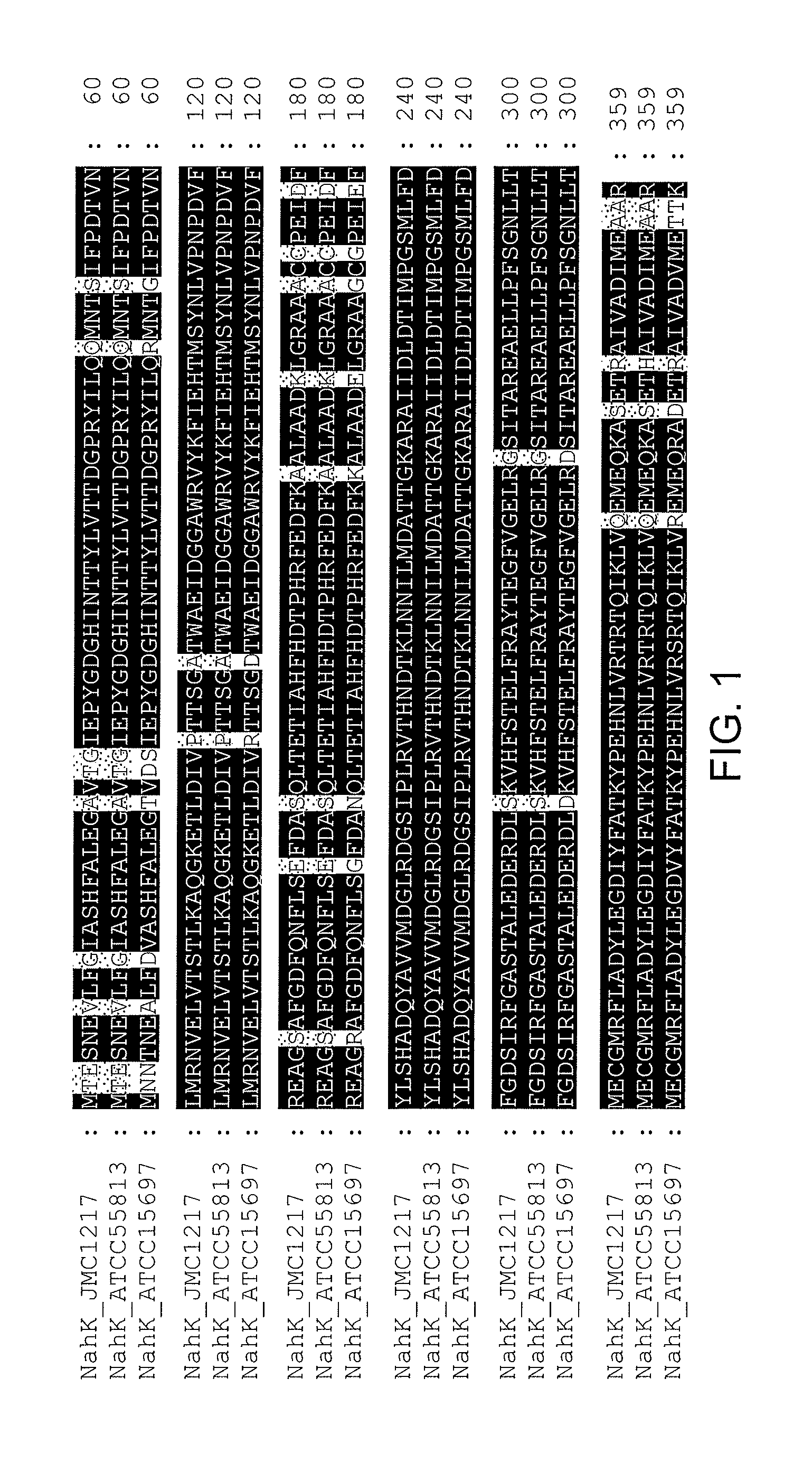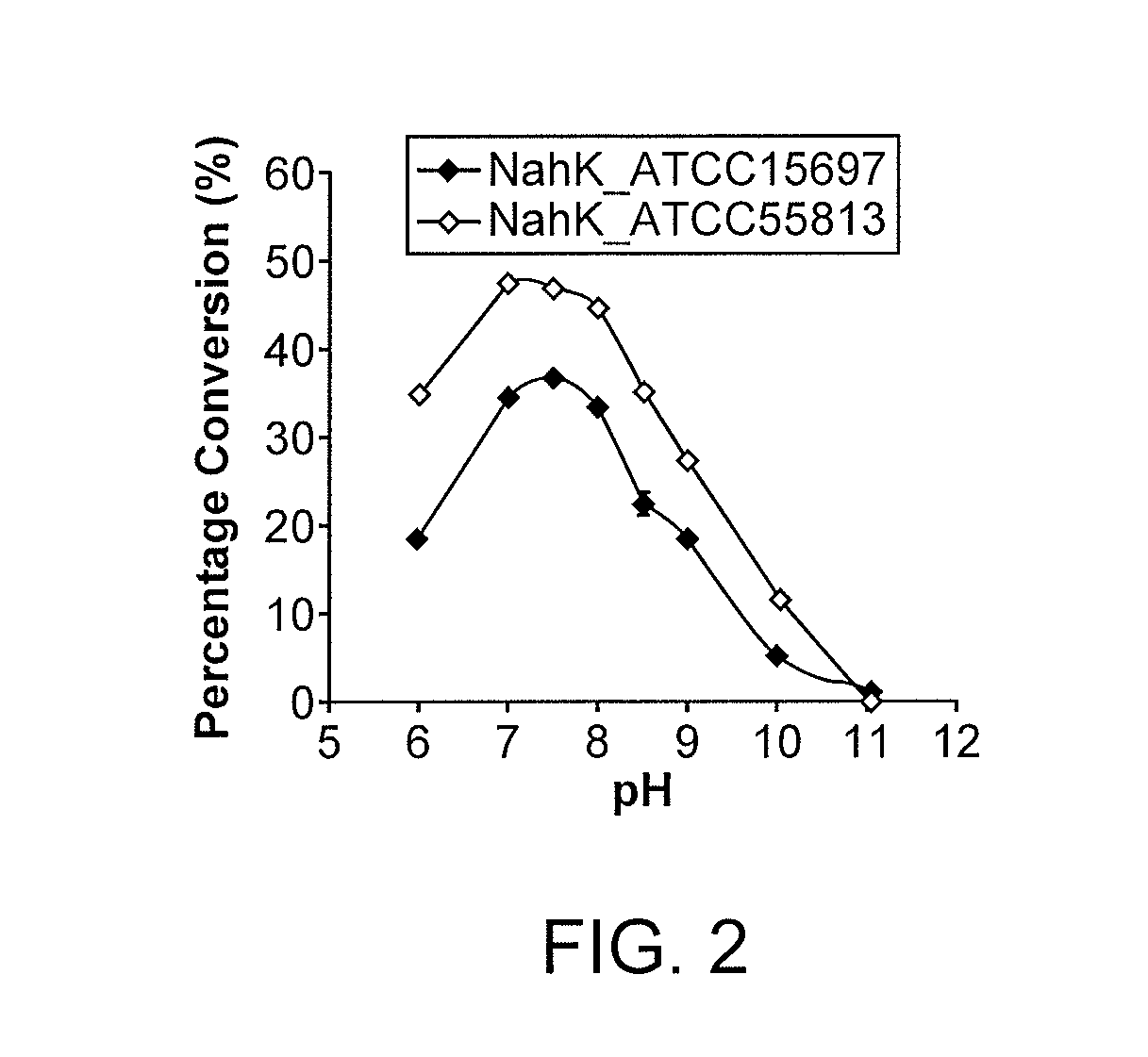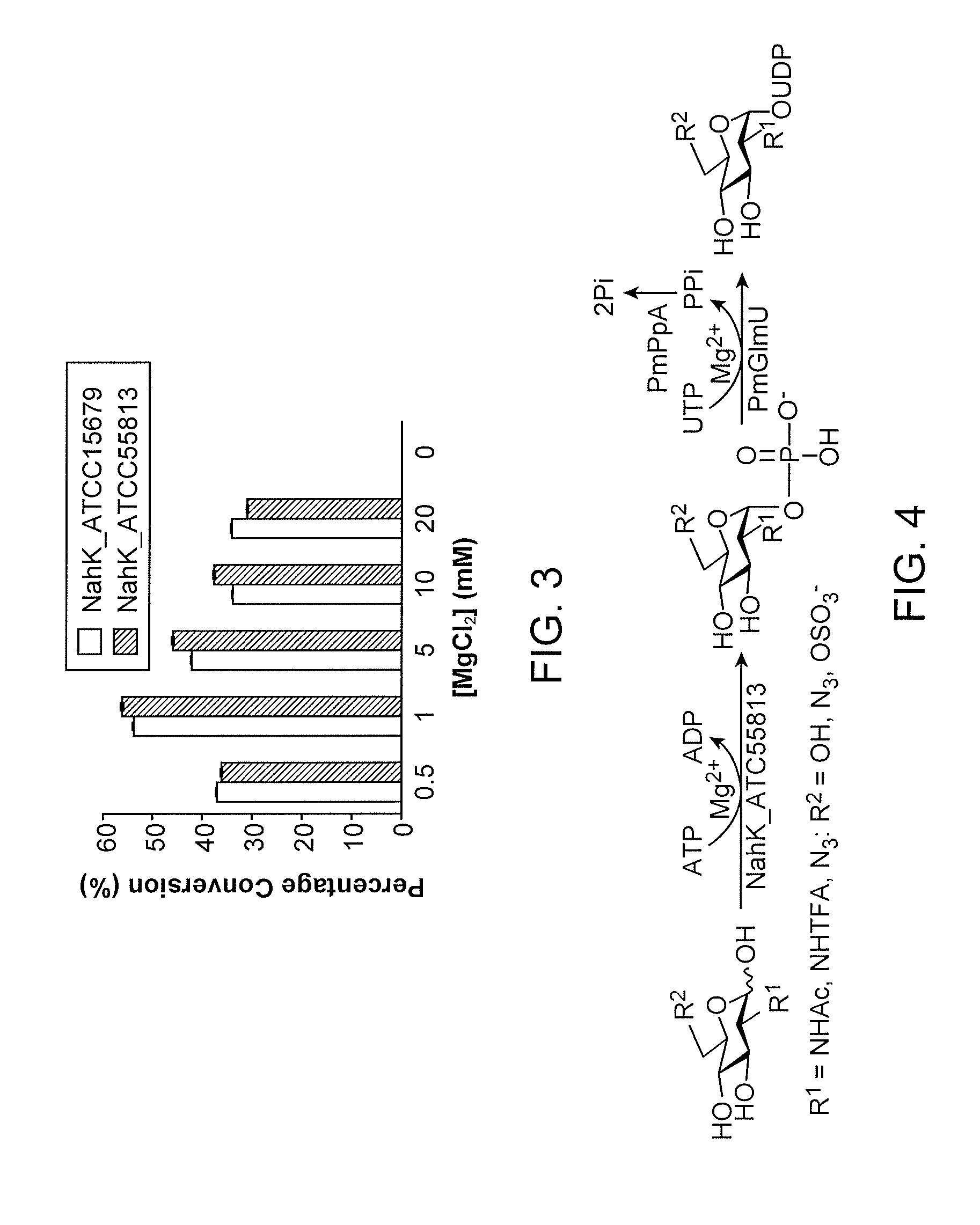Chemoenzymatic synthesis of heparin and heparan sulfate analogs
- Summary
- Abstract
- Description
- Claims
- Application Information
AI Technical Summary
Benefits of technology
Problems solved by technology
Method used
Image
Examples
example 1
Enzymes
NahK_ATCC15697 and NahK_ATCC55813 N-acetylhexosamine 1-Kinases
[0191]NahK (EC 2.7.1.162) catalyzes the direct addition of a phosphate from adenosine 5′-triphosphate (ATP) to the anomeric position of N-acetylhexosamine for the formation of N-acetylhexosamine-1-phosphate and adenosine 5′-diphosphate (ADP). The only characterized NahK to date is encoded by the lnpB gene in the lnpABCD operon of Bifidobacterium longum JCM1217. Herein we report the cloning and characterization of two new NahKs from Bifidobacterium infantis (ATCC15697) and Bifidobacterium longum (ATCC55813), respectively. A new capillary electrophoresis-based assay method has been developed for biochemical characterization of NahKs. We found that in addition to previously reported NahK substrates, various GlcNAc derivatives including those with C2-azido, C6-azido, and 6-O-sulfate groups are tolerable substrates for the newly cloned NahKs. In addition, despite of their low activities toward glucose and galactose, the...
example 2
Preparation of UDP-GlcNAc and Derivatives
[0289]General Methods for Compound Purification and Characterization.
[0290]Chemicals were purchased and used without further purification. 1H NMR and 13C NMR spectra were recorded on a 600 MHz NMR spectrometer. High resolution electrospray ionization (ESI) mass spectra were obtained at the Mass Spectrometry Facility in the University of California, Davis. Silica gel 60 Å (Sorbent Technologies) was used for flash column chromatography. Analytical thin-layer chromatography (Sorbent Technologies) was performed on silica gel plates using anisaldehyde sugar stain for detection. Gel filtration chromatography was performed with a column (100 cm×2.5 cm) packed with BioGel P-2 Fine resins. ATP, UTP, and GlcNAc were purchased from Sigma. GlcNTFA, GlcN3, GlcNAc6N3, GlcNAc6S, GlcNS were synthesized as described previously. NanK_ATCC55813 and PmPpA were overexpressed as discussed previously.
[0291]Synthesis of GlcNTFA6S T5b-6.
[0292]GlcNTFA T5b-2 (300 mg, 1...
example 3
Preparation of UDP-GalNAc
[0319]One-Pot Three-Enzyme Synthesis of uridine 5′-diphospho-2-acetamido-2-deoxy-α-D-glacopyranoside (UDP-GalNAc)
[0320]GalNAc (100 mg, 1.0 eq), ATP (1.2 eq.), and UTP (1.2 eq.) were dissolved in water in a 50 mL centrifuge tube containing Tris-HCl buffer (100 mM, pH 8.0) and MgCl2 (10 mM). After the addition of NanK_ATCC55813 (3.5 mg), PmGlmU (5 mg), and PmPpA (2.5 mg), water was added to bring the volume of the reaction mixture to 20 mL. The reaction was carried out by incubating the solution in an isotherm incubator at 37° C. for 24 h with gentle shaking. Product formation was monitored by TLC (EtOAc:MeOH:H2O=3:2:1 by volume) with p-anisaldehyde sugar staining. The reaction was stopped by adding the same volume of ice-cold ethanol and incubating at 4° C. for 30 min. The mixture was concentrated and passed through a BioGel P-2 gel filtration column to obtain the desired product. Silica gel column purification (EtOAc:MeOH:H2O=4:2:1) was applied for further p...
PUM
 Login to View More
Login to View More Abstract
Description
Claims
Application Information
 Login to View More
Login to View More - R&D
- Intellectual Property
- Life Sciences
- Materials
- Tech Scout
- Unparalleled Data Quality
- Higher Quality Content
- 60% Fewer Hallucinations
Browse by: Latest US Patents, China's latest patents, Technical Efficacy Thesaurus, Application Domain, Technology Topic, Popular Technical Reports.
© 2025 PatSnap. All rights reserved.Legal|Privacy policy|Modern Slavery Act Transparency Statement|Sitemap|About US| Contact US: help@patsnap.com



